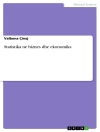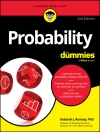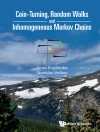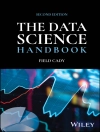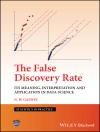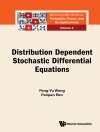Charles M. (Chuck) Newman has been a leader in Probability Theory and Statistical Physics for nearly half a century. This three-volume set is a celebration of the far-reaching scientific impact of his work. It consists of articles by Chuck’s collaborators and colleagues across a number of the fields to which he has made contributions of fundamental significance. This publication was conceived during a conference in 2016 at NYU Shanghai that coincided with Chuck’s 70th birthday.
The sub-titles of the three volumes are:
I. Spin Glasses and Statistical Mechanics
II. Brownian Web and Percolation
III. Interacting Particle Systems and Random Walks
The articles in these volumes, which cover a wide spectrum of topics, will be especially useful for graduate students and researchers who seek initiation and inspiration in Probability Theory and Statistical Physics.
Inhaltsverzeichnis
Rabi Bhattacharya, Lizhen Lin: Differential geometry for model-independent analysis of images and other non-euclidean data: recent developments.-
Federico Camia, Rene Conijn, Demeter Kiss: Conformal measure ensembles for percolation and the FK-Ising model.-
Colin L. Clark, Larry Winter: Stochastic Hydrogeology: Chuck Newman had a good idea about where to start.-
Michael Damron, Pengfei Tang: Superlinearity of geodesic length in 2D critical first-passage percolation.-
Hugo Duminil-Copin, Vincent Tassion: About the slab percolation threshold for the Potts model in dimension d ≥ 4.-
William G. Faris: Rooted tree graphs and the Butcher group: Combinatorics of elementary perturbation theory.-
L. R. G. Fontes: A stronger topology for the Brownian web.-
Alberto Gandolfi: FKG (and other inequalities) via (generalized) FK representation (and iterated folding).-
Valdivino V. Junior, Fabio Machado, Krishnamurti Ravishankar: The rumor percolation model and its variations.-
Leonardo T. Rolla: Site Percolation on a Disordered Triangulation of the Square Lattice.-
Emmanuel Schertzer, Rongfeng Sun: Perturbations of Supercritical Oriented Percolation and Sticky Brownian Webs.


